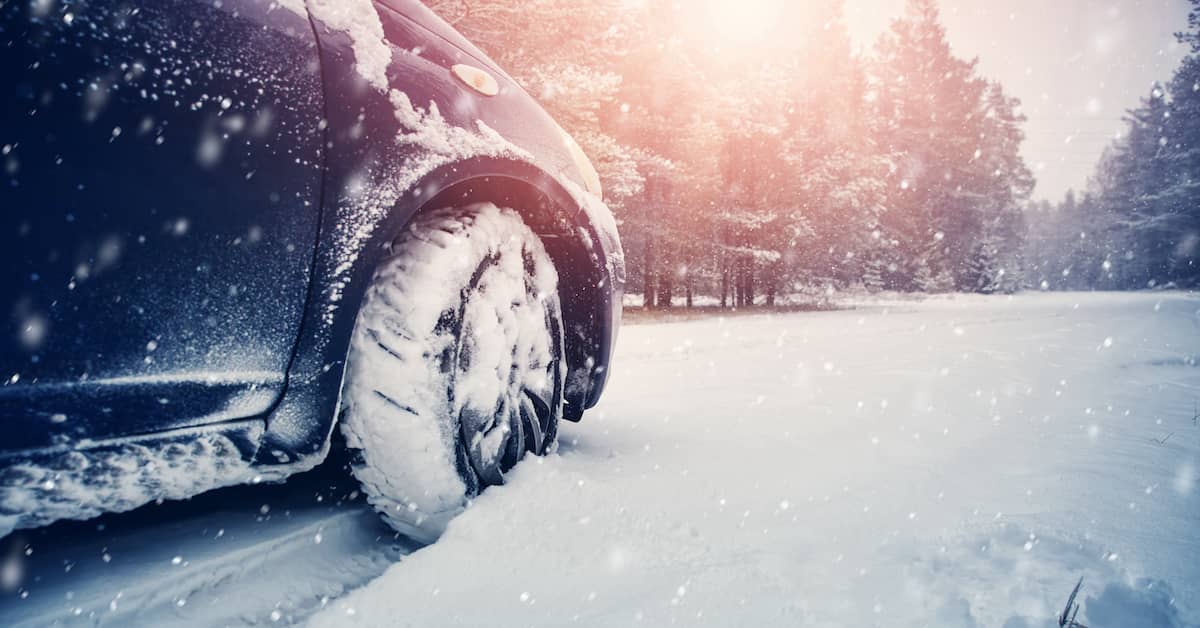
Driving in snow can be extremely dangerous. Slick roads, reduced visibility, and other issues can easily lead to accidents. Indeed, statistics from the Nebraska Department of Transportation show that motor vehicle accidents tend to be at their highest from October to February when the weather is at its worst.
The best way to avoid being involved in an accident this winter is to be prepared in advance and to be vigilant any time you’re behind the wheel. If another driver fails to take these same precautions, however, you may be able to make a claim for your injuries and damages.
Hauptman, O’Brien, Wolf & Lathrop has handled car accident claims arising from crashes in all types of weather. If you or someone you love has been harmed, don’t hesitate to call (402) 241-5020 today for a FREE case review.
1. Invest in Snow Tires
According to the AAA Foundation for Traffic Safety, 46% of traffic accidents happen during the winter. Choosing the right kind of tires for your vehicle is essential for reducing the risk of a crash.
Some car owners use their all-season or summer tires in the winter season. This is dangerous, as these tires are not optimal for winter driving.
According to Edmunds, the stopping distance for snow-packed winter tires is over 50% less than that of summer tires and approximately 15% less than that of all-season tires. This means that a vehicle equipped with snow tires will come to a stop much sooner than tires designed for other weather conditions.
In Nebraska, where winters can produce 20 to 40 inches of snowfall, you need snow tires with good traction or road grip, solid road adhesion capacity, and optimal braking performance. Investing in snow tires will help keep you safe, reduce slippage on the road, and improve vehicle control in wet or slippery road conditions.
2. Be Prepared
Safe driving in winter often requires considerable preparation. Here’s a list of things you should do to prepare your vehicle for the season:
- Test your batteries. Weak or dead batteries are common during the wintertime. AAA reports that dead batteries are the most common call they get every winter. So, test your car battery to ensure it’s in great condition. If your battery isn’t good, replace it with a new one immediately.
- Check your drive belts for frays, cracks, tears, or other forms of wear. As a rule, replace all belts with new ones every 60,000 miles. Also check your hoses, pipes, and clamps for leaks, tears, cracks, or looseness.
- Check all your tire pressure more frequently and ensure they’re optimal. Tires tend to lose pressure with falling temperatures—approximately 1 PSI for every 10-degree drop in temperature. Get a portable tire pressure kit you can use to take the readings by yourself.
- Inspect vehicle fluid levels. Ensure that your coolant, oil, transmission and brake fluid, and washer fluid are all at optimal levels. Use only recommended fluids.
- Check your brake system for wear, sticky calipers, brake fades, or any issue that could cause brake failure.
- Carry an emergency winter road kit in your vehicle. This kit should contain a portable vehicle toolkit, jumper cables, extra tow ropes, flashlights and extra batteries, extra mobile phones containing emergency numbers and vital contacts, a first-aid box, a snow shovel, an ice scraper, non-perishable food items, extra blankets, extra warm clothing, warning equipment like flares, walkie-talkies or other communication devices, one or two rolls of duct tape, and paper towels.
3. Check Weather and Road Conditions
Check the weather and road conditions before leaving the house. Also, take sudden weather changes (such as snow squalls, which can cause sudden poor visibility) into consideration. If there are weather alerts about sudden weather changes, consider staying home or taking necessary safety precautions.
4. Plan Your Route
Thanks to Google Maps, Waze, local traffic reports, and other navigational apps, you can easily look up traffic updates and plan your commute accordingly. Weather and road conditions can change suddenly in winter.
Always leave early and make allowances for sudden weather changes. Consider taking highways and major roads, as the city is likely to clear the snow and de-ice major thoroughfares first.
5. Clear Snow and Ice
In winter, snow brushes, ice scrapers, and a portable shovel are essential. You’ll need to shovel snow from your vehicle’s path if your car is snowed in. Then, use the ice scraper to remove the snow from your windshields, side windows, and side mirrors. If it’s just snowed and you have light, fluffy snow on your car, use the snow brush to remove it.
Don’t drive with snow on your windows, as it will obscure your view and increase your risk of being in an accident. Plus, driving with an obstruction on your front windshield, rear window, or side windows is against the law in Nebraska.
6. Drive Slowly
Winter driving is not the time for some pedal-to-the-metal activity. Vehicle tires typically have lower traction because of the wet or icy road surfaces. This makes it easy to get into a skid or lose control if you drive too fast. Slower driving allows you to stop in time and avoid collisions on wet roads.
7. Brake Gently and Gradually
Sudden braking on the road in winter can be hazardous because of poor traction control and slick road surfaces. This is what leads to skids and loss of vehicle control.
When you need to brake, do so gently and gradually. This will prevent your car from activating the anti-lock brake system (ABS). If your ABS does get activated, keep your leg on the brake for as long as necessary until the car comes to a stop.
8. Accelerate Smoothly
If you have to accelerate while driving in the winter, you should do so gradually and smoothly. This way, your tires won’t spin out of control due to poor traction. Avoid sudden accelerations and driving too fast.
As with braking, do so gently until you attain the desired speed. However, keep in mind that because the road surfaces are likely to be slick, you may also require longer braking distances.
9. Avoid Sudden Maneuvers
Sudden maneuvering while driving in snowy conditions often leaves little to no room for reactions from motorists, pedestrians, and others. If there’s one golden rule you must follow when driving in winter, it’s to be predictable. Avoid sudden acceleration, braking, or turns. It will keep you and other road users safe.
10. Keep a Safe Distance
In ideal road conditions, standard driving practices require drivers to give the vehicle in front of them a 3-to-4 second lead (or two car lengths). But, when snow and ice are on the road, you should allow a minimum of 8 to 10 seconds (or four to six car lengths).
Don’t tailgate or drive too close to other vehicles. Always allow ample space between your car and the vehicle in front of you. This will buy you ample time to avoid traffic collisions.
11. Beware of Black Ice
Black ice is a thin layer of transparent ice that forms on roadways during winter. It’s dangerous because it covers the pavement and provides no traction for vehicle tires, thus leaving vehicles prone to skidding off the road or colliding with other vehicles.
The Federal Highway Administration estimates that black ice contributes to over 116,800 vehicle crashes and 1,300 roadway fatalities annually. It is extremely important to be aware of black ice and adjust your speed and driving habits accordingly.
12. Steer Into Skids
Steering into a skid means following the direction of your car whenever it slides out. For example, if your car fishtails to the right, gently steer to the right (and vice versa). This will help your vehicle roll with the inertia, correct its course, and help you regain control.
This skid control video by Consumer Reports shows you how. Skidding is scary and may cause you to panic. Instead, try to remain calm and steer in the direction you want to go while gently braking—following these tips should keep you safe.
Injured in an Accident While Driving in the Snow?
Heavy snow, black ice, and other adverse weather conditions create hazards on the road. While safe drivers can generally navigate these issues without incident, careless motorists are likely to cause accidents.
Contact Hauptman, O’Brien, Wolf & Lathrop for a FREE consultation if you were injured due to someone else’s negligence while driving in the snow. Our car accident lawyers serve clients in Omaha, Sarpy County, and all of Nebraska and Iowa.


I can’t thank Jeremy, Nicole, and Andrea enough for the way they handled my case. After my car accident, I felt overwhelmed and unsure of what to do, but their team stepped in with confidence, compassion, and clear communication every step of the way.
They explained things in a way that actually made sense, fought hard to make sure I was treated fairly, and never made me feel like just another case number.
If you’re looking for attorneys who actually care and know how to get things done — these are your people